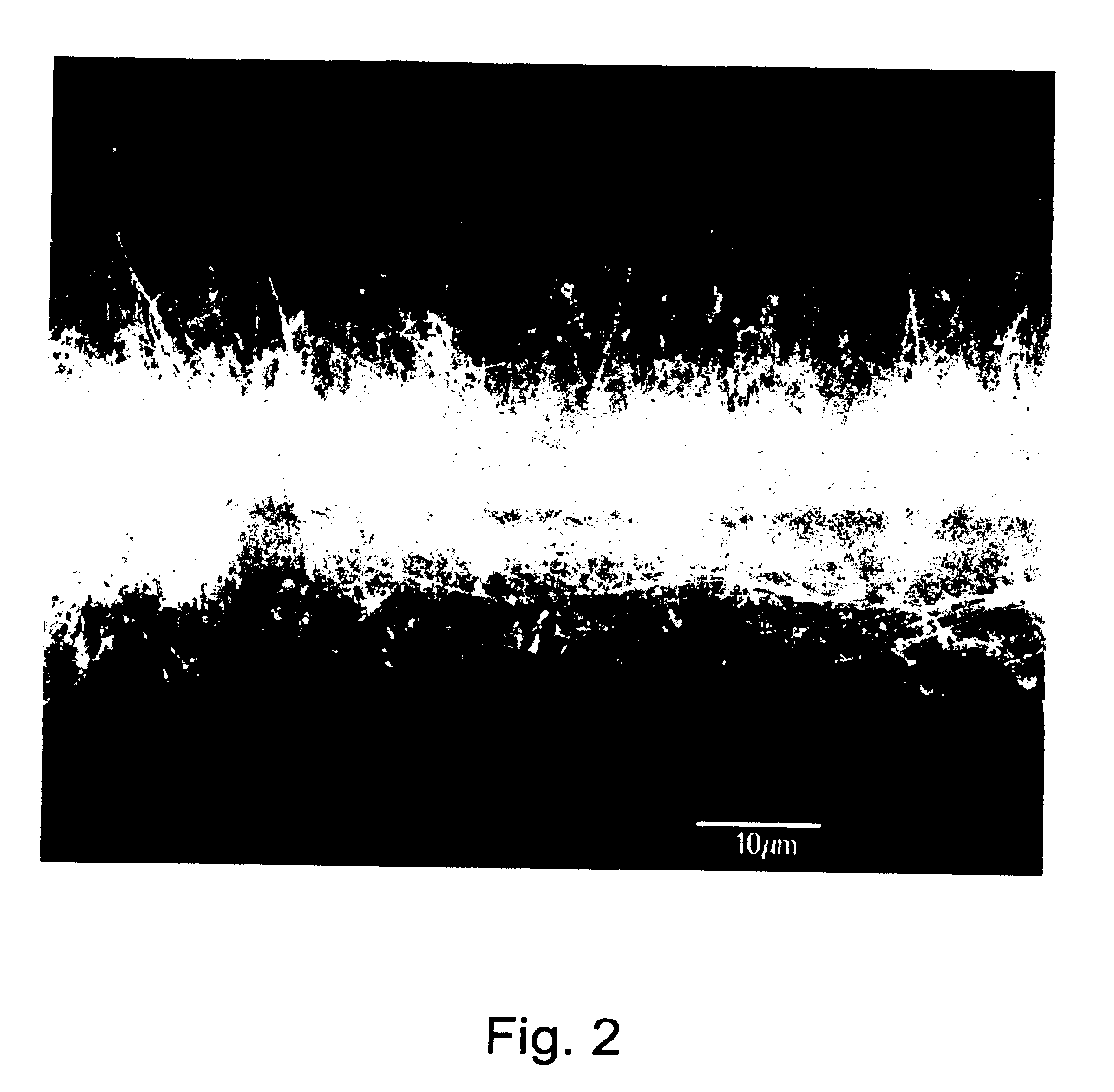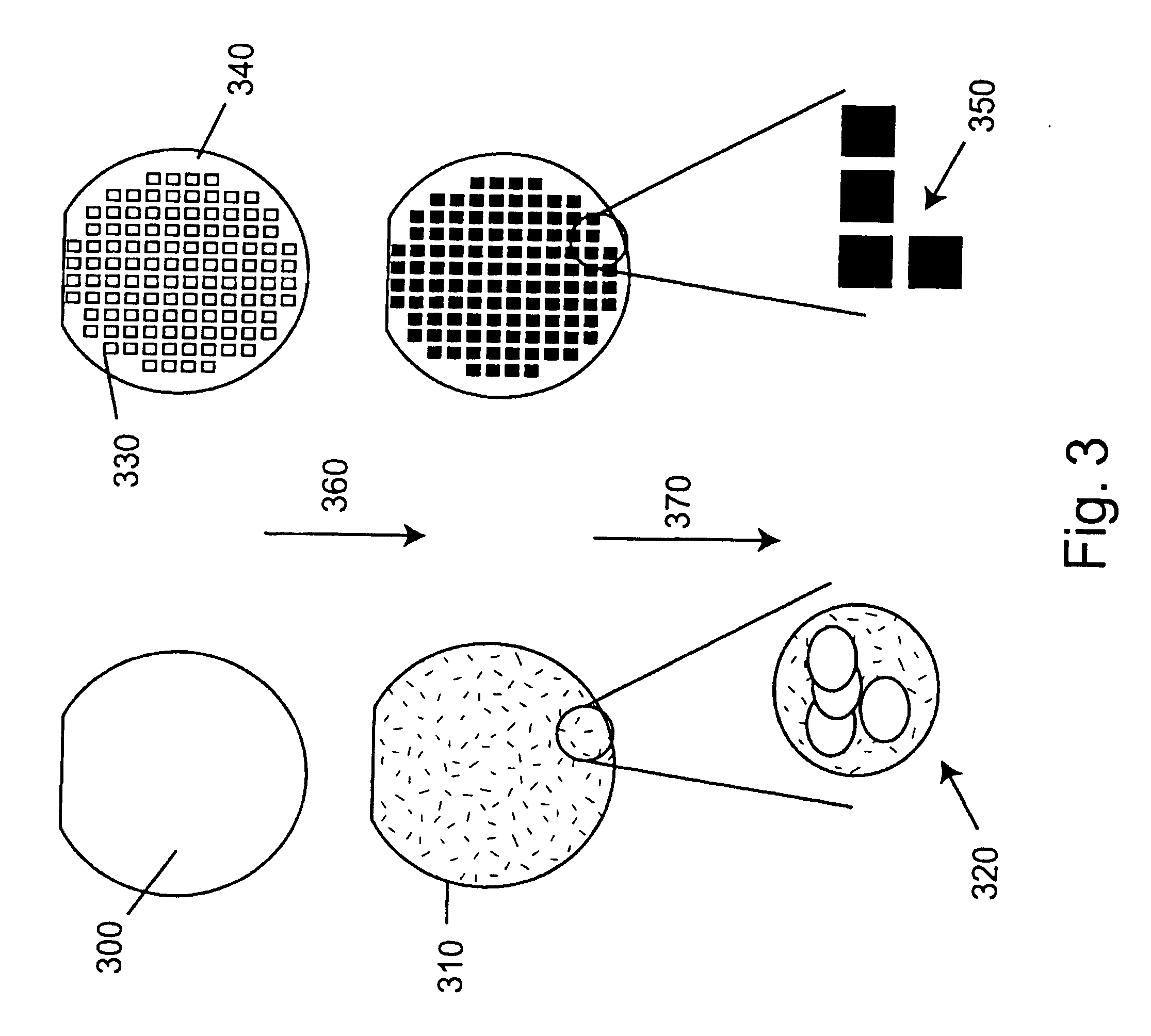Nanofiber surfaces for use in enhanced surface area applications
- Summary
- Abstract
- Description
- Claims
- Application Information
AI Technical Summary
Benefits of technology
Problems solved by technology
Method used
Image
Examples
example 1
i) EXAMPLE 1
Wicking on Nanofiber and Planar Substrates
[0309] To illustrate comparative wicking of liquids (here water) between a planar silicon surface and a nanofiber enhanced area substrate of the invention, a 1 uL drop of water was placed upon each. FIG. 28A, displays a graph comparing the wicking of the water, (measured in FIG. 28 as comparative evaporation) between the planar silicon surface and the nanofiber enhanced surface area substrate of the invention. As can be seen, wicking (and hence, in FIG. 28, evaporation as displayed by “% water loss”) occurs much more rapidly with the substrates of the invention. FIG. 28B displays the data for the graph in FIG. 28A.
example 2
ii) EXAMPLE 2
Exemplary Flow Assays of Nanofiber Substrates
[0310]FIG. 29 shows a schematic of a nanofiber enhanced slide configured into a flow assay scheme. In FIG. 29, biotinylated BSA (i.e., a probe), 2900, was adsorbed at known positions along nanofiber tracks (in this instance nanowire tracks), 2910, on slide 2940. The tracks were generated by scraping the edge of a glass slide through a nanofiber field on a substrate. A solution containing fluorescently labeled streptavidin (i.e., a target) was applied to the tops of the tracks. 15 ul of SAv-647 in PBS / 0.1% BSA was followed by a total of 300 ul PBS / 0.1% BSA. The liquid, thus, wicked into the nanofiber tracks until it filled the interstitial space between the nanofibers. To continue the liquid flow and to wash through any unbound label, additional liquid was added at the top of the tracks and a filter paper wick, 2920, was placed at the bottom end of the tracks. The paper acted as a reservoir for the liquid that had traversed t...
example 3
iii) EXAMPLE 3
Exemplary Nanofiber Array Patterning
[0313] The ability to grow nanometer scale wires of defined diameter and length on various surfaces is illustrated in FIG. 7. FIG. 7 shows an example of an “extreme” surface with very high surface to volume ratios and yet without the complex etched architecture of other more traditional strategies for increasing surface area to volume (e.g. etched silicon). FIG. 7 shows SEM views of top and side views of a typical nanofiber surface, both patterned and unpatterned. The silicon nanofibers were grown out from a silicon wafer and the surfaces were therefore compatible with standard glass modification chemistries, etc. Although discussion herein primarily focuses on silicon wafers as the substrate for nanowire growth, as explained further above, the process can potentially be conducted on a wide variety of substrates that can have planar or complex geometries.
[0314] Examples of nanofiber arrays produced by masking process can be seen in...
PUM
| Property | Measurement | Unit |
|---|---|---|
| Length | aaaaa | aaaaa |
| Length | aaaaa | aaaaa |
| Length | aaaaa | aaaaa |
Abstract
Description
Claims
Application Information
 Login to View More
Login to View More - R&D
- Intellectual Property
- Life Sciences
- Materials
- Tech Scout
- Unparalleled Data Quality
- Higher Quality Content
- 60% Fewer Hallucinations
Browse by: Latest US Patents, China's latest patents, Technical Efficacy Thesaurus, Application Domain, Technology Topic, Popular Technical Reports.
© 2025 PatSnap. All rights reserved.Legal|Privacy policy|Modern Slavery Act Transparency Statement|Sitemap|About US| Contact US: help@patsnap.com



